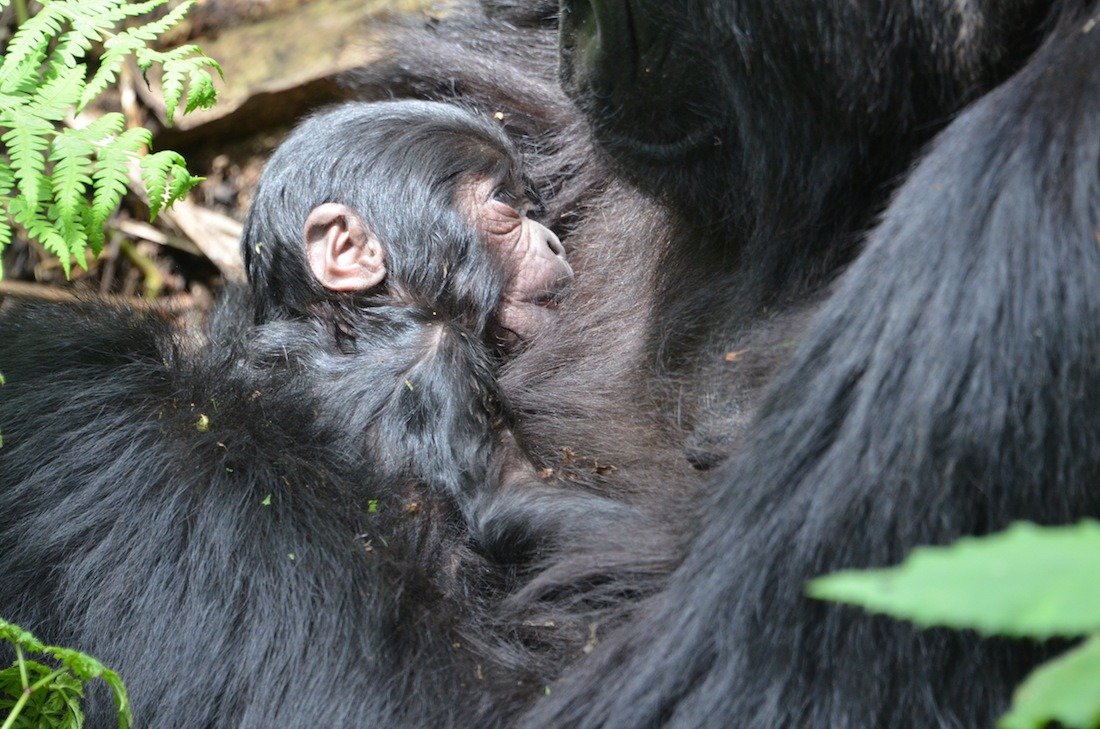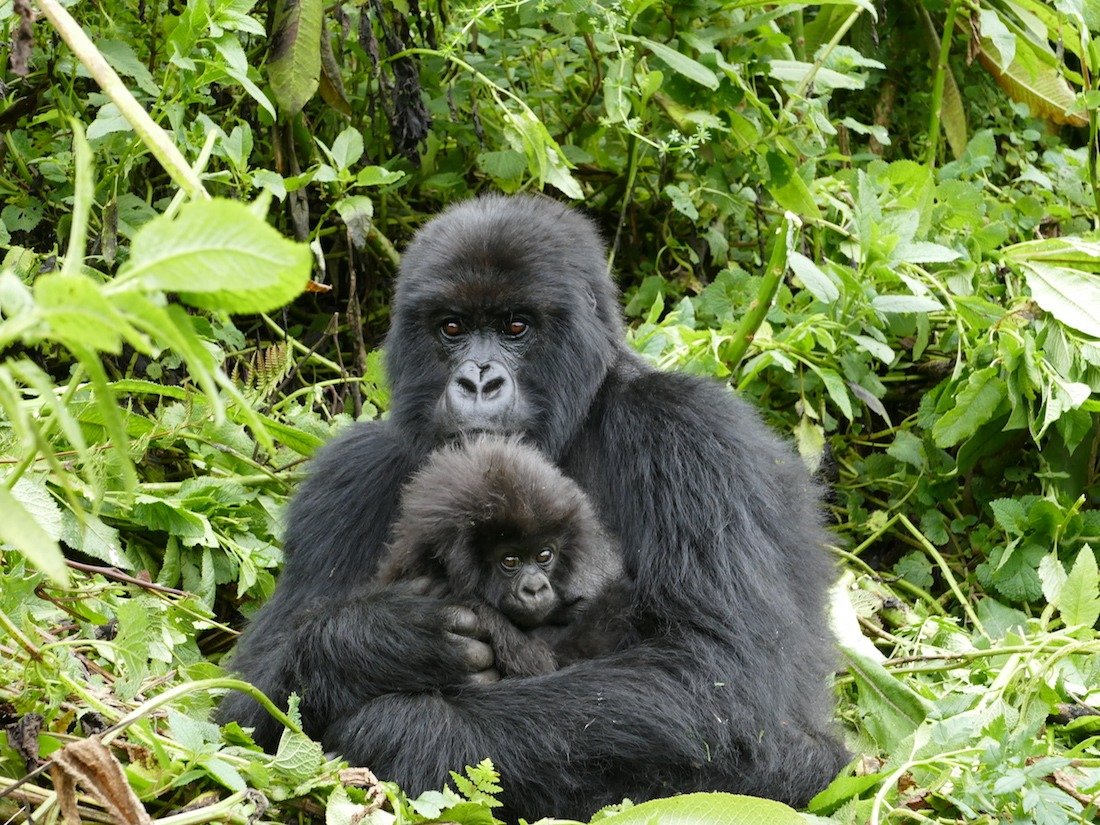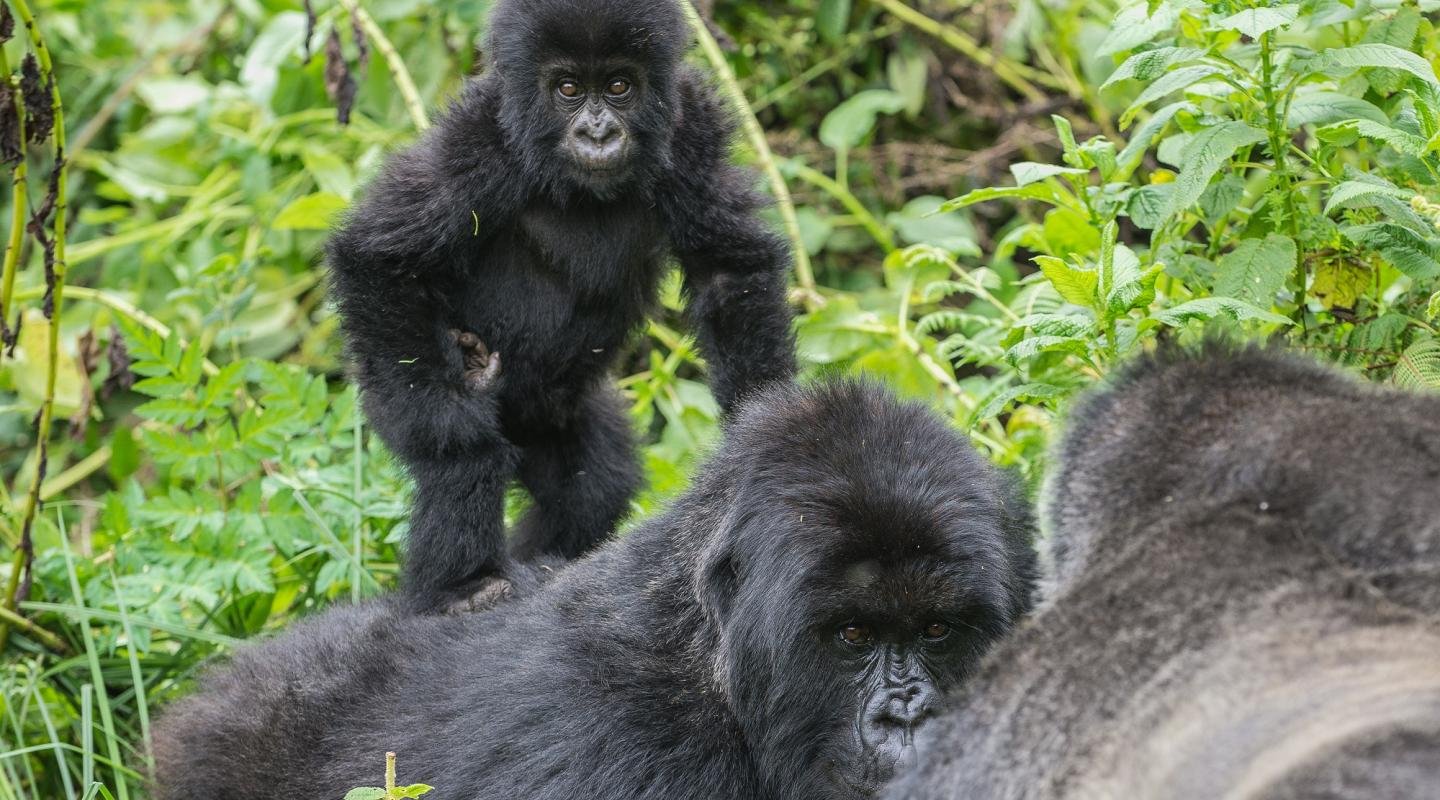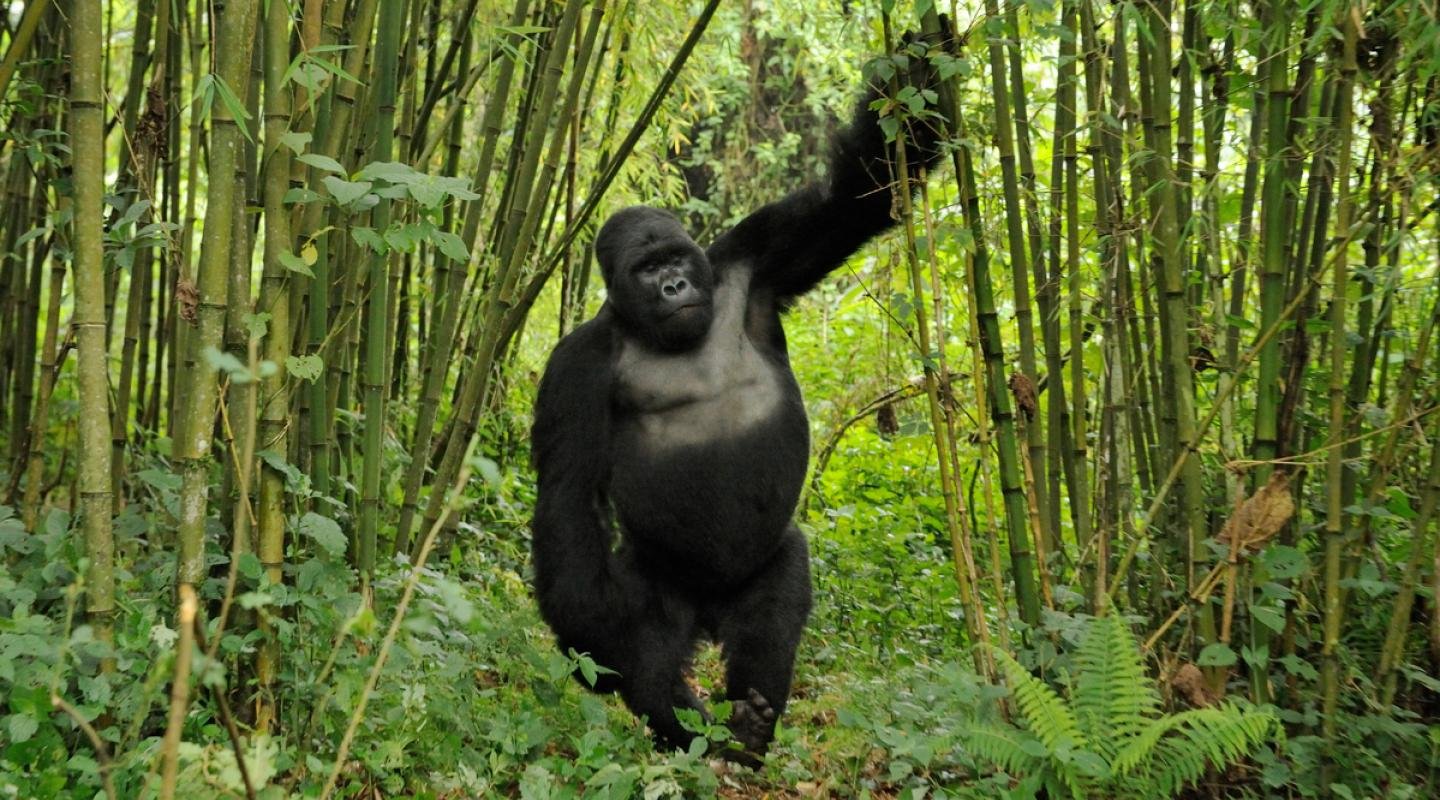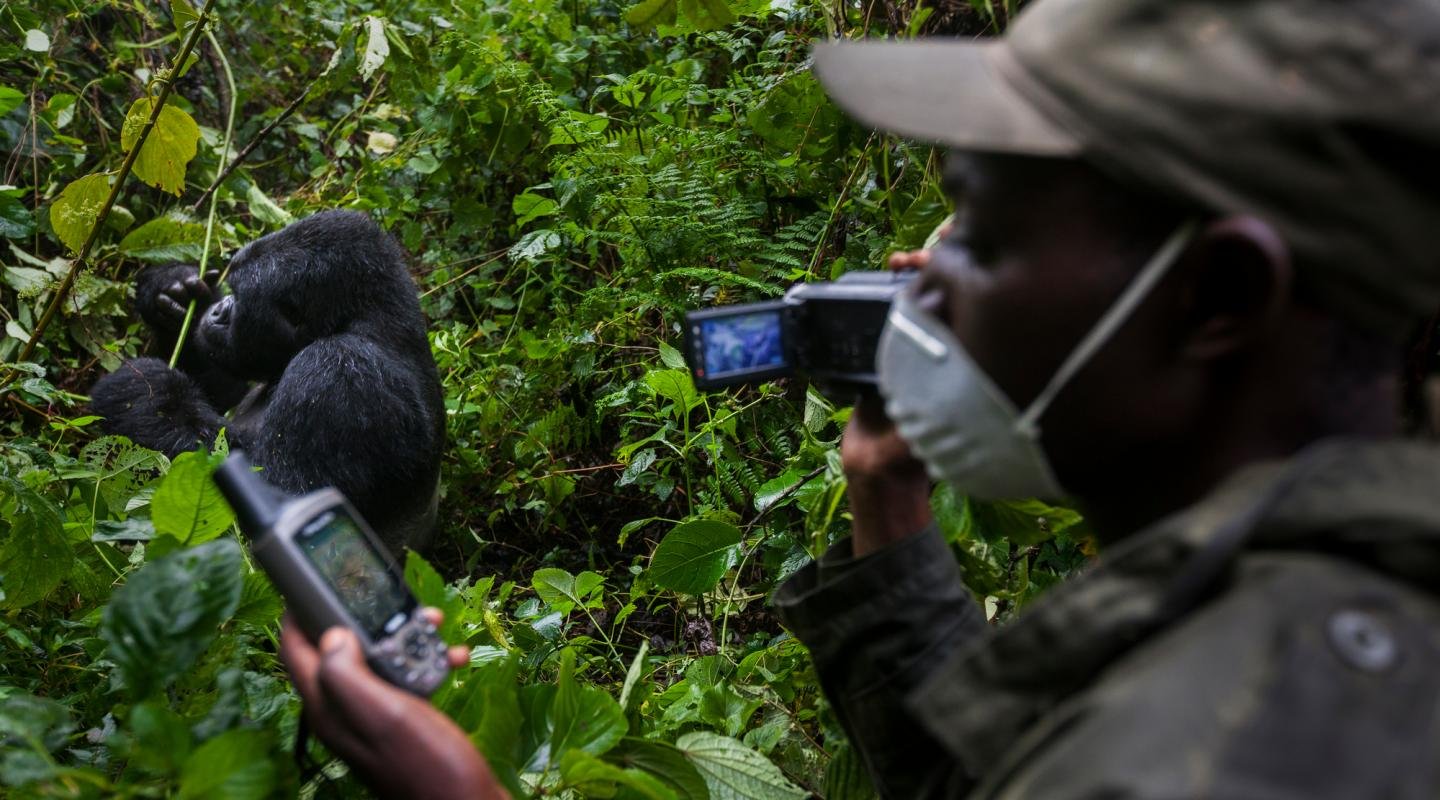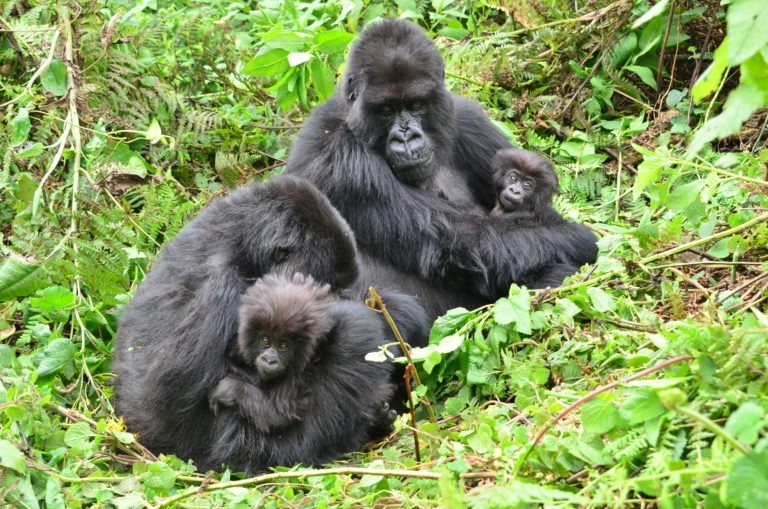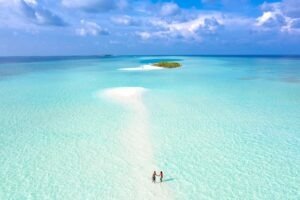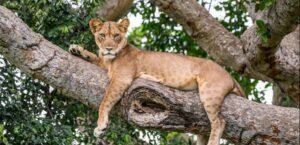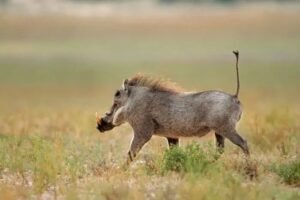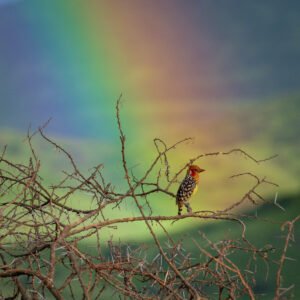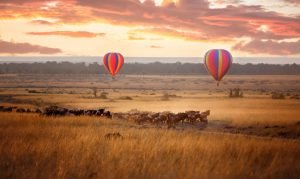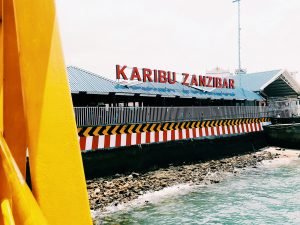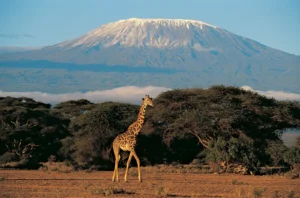
Why You Need to See Africa’s Mountain Gorillas in Uganda
Mountain gorillas in Uganda (also Rwanda) survives in the wild, so trekking into their native forests is your only chance to catch a peek. A mountain gorilla snacks on leaves while perched high in a tree.
PRIMATES, GORILLAS AND WILDLIFE OF UGANDA – 10 DAYS / 9 NIGHTS
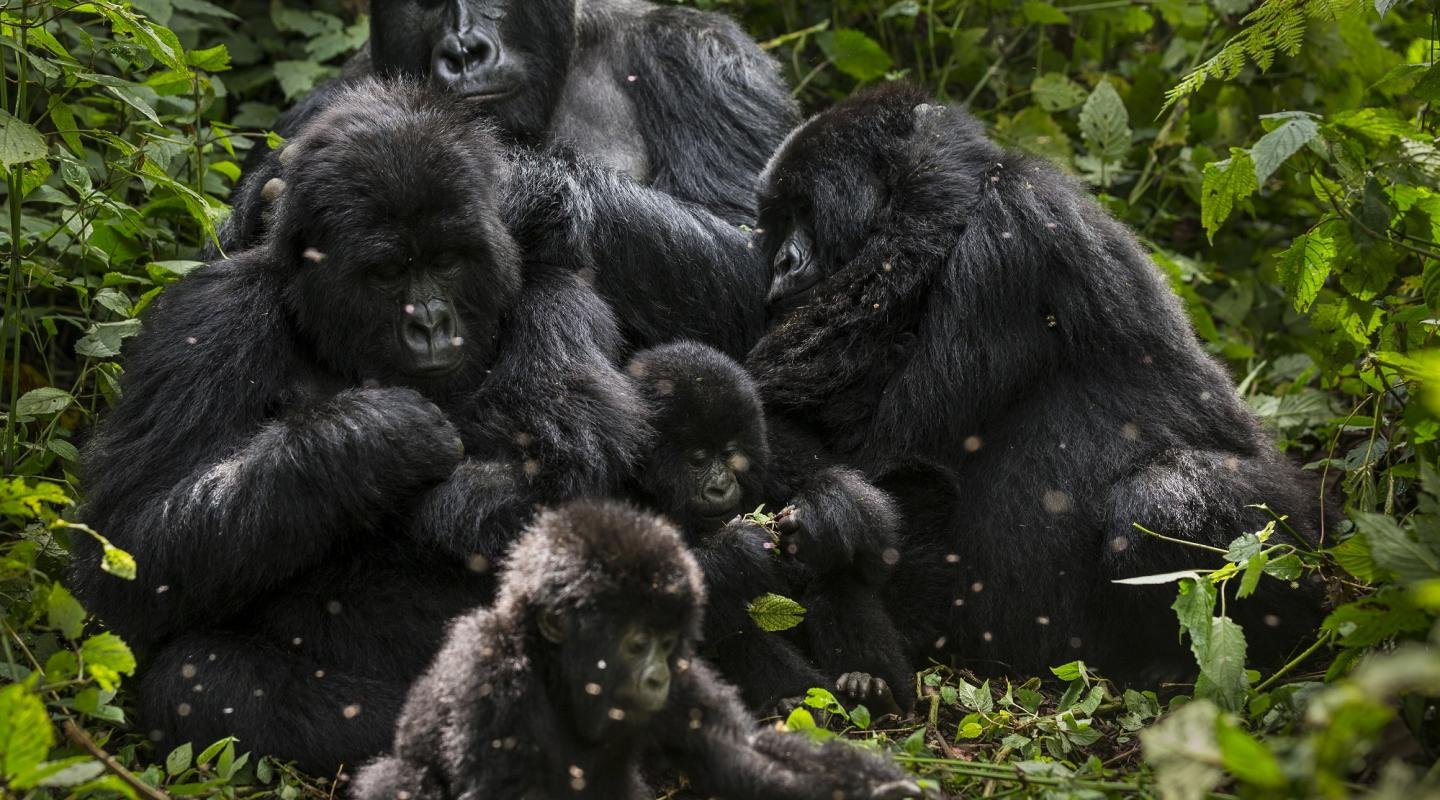
Sitting in silence on the cold ground of a Ugandan forest for 60 minutes might be one of life’s greatest privileges.
Mountain gorillas in Uganda only live in the dense vegetation of Uganda’s Bwindi Impenetrable Forest National Park and along the dormant volcanic Virunga mountain range that stretches across Rwanda’s Volcanoes National Park, Uganda’s Mgahinga Gorilla National Park, and Virunga National Park in the Democratic Republic of the Congo.
The Mountain Gorillas in Uganda (gorilla beringei beringei) is one of two subspecies of Eastern Gorillas and is one of our closest living relatives. It is only found in the Virunga volcanic mountains of Central Africa, on the confluence of Rwanda, Uganda and DRC.
PRIMATES, GORILLA & WILDLIFE OF UGANDA – 12 DAYS/11 NIGHTS
There are now a total of approximately 720 gorillas split up into their own social/ family groups. The amount of gorillas in a social group varies and can range from 5 gorillas to 46 gorillas. The Mountain Gorilla continues to be considered critically endangered on the IUCN Red List of Endangered Species. It faces an extremely high risk of extinction in the wild due to habitat loss, poaching, human disease, and war.
Mountain Gorillas In Uganda are found in Bwindi Impenetrable National Park (BINP) and Mgahinga Gorilla National Park(MGNP). In these areas tracking takes place at 5 locations Buhoma, Ruhija, Rushaga, Nkuringo in BINP and Ntebeko in MGNP. All locations combined give a total of over 18 Gorilla groups, however the permit number are limited because only 8 people are allowed to visit a gorilla family per day for only one hour.
Prior booking is recommended and this can be done directly with us, Sima Safari, or Uganda Wildlife Authority in Kampala. Permits can be booked up to two years in advance.
Gorillas display uncanny human characteristics. The close-knit family groups are headed by a silverback – a mature male – who selects places for the group to eat and sleep, and has many privileges, including the right to feed first.
This privilege pays off for the rest of the family, as if the group is threatened, the silverback – weighing up to 200kg – will defend them to the death, if necessary.
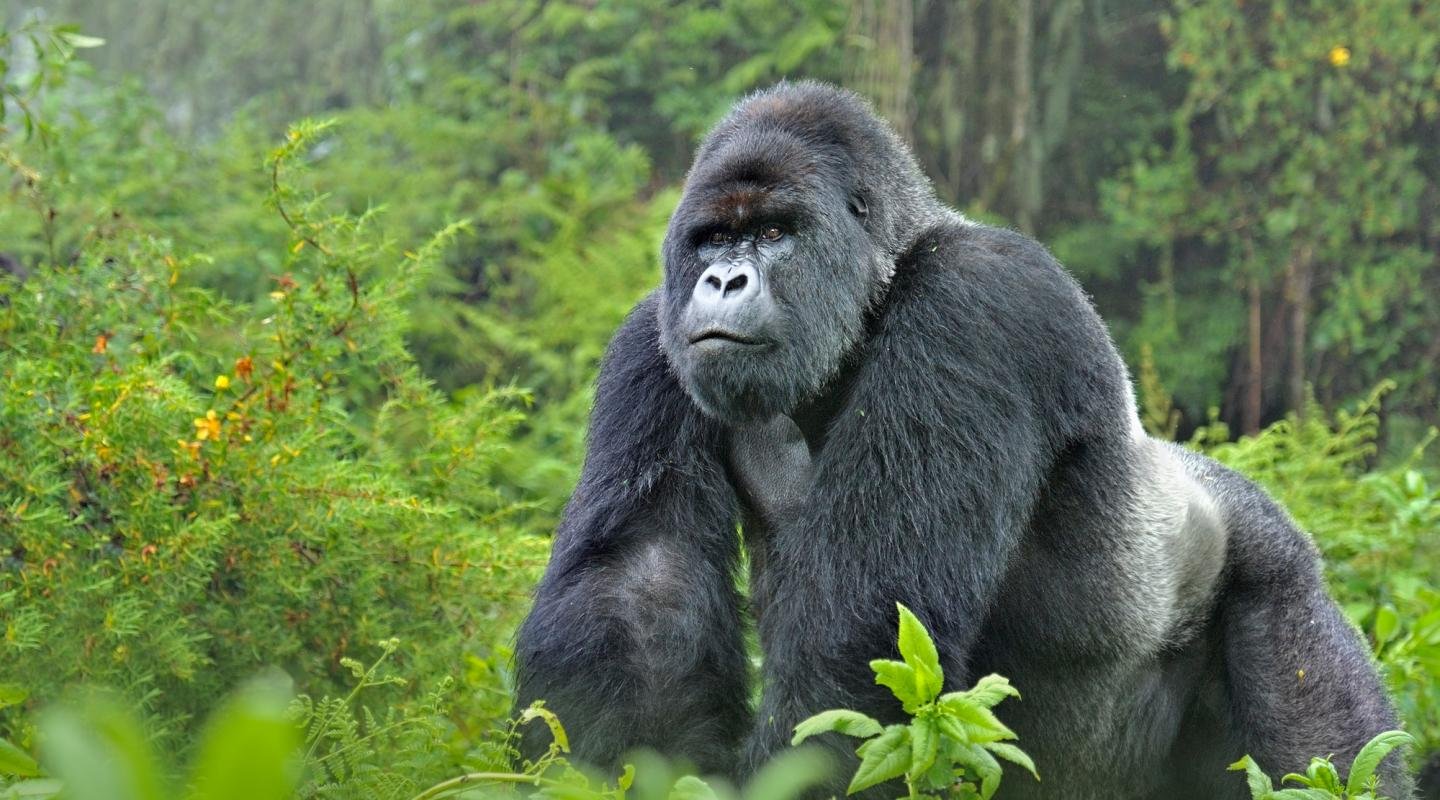
Generally though, the gorilla is a gentle species. They are considered to be highly intelligent, have been observed using tools like other great apes, and communicate using a variety of vocal sounds.
It’s not a secret that gorillas and humans are pretty alike, after all, we’re sharing more than 98% of DNA! That being said, we rarely compare ourselves to them, perceiving gorillas as somewhat intelligent primates, but no more than animals.
This means that exposure to human illnesses – even a cold – can have potentially detrimental impacts on gorillas as they are so genetically similar to us, but they haven’t developed the necessary immunities
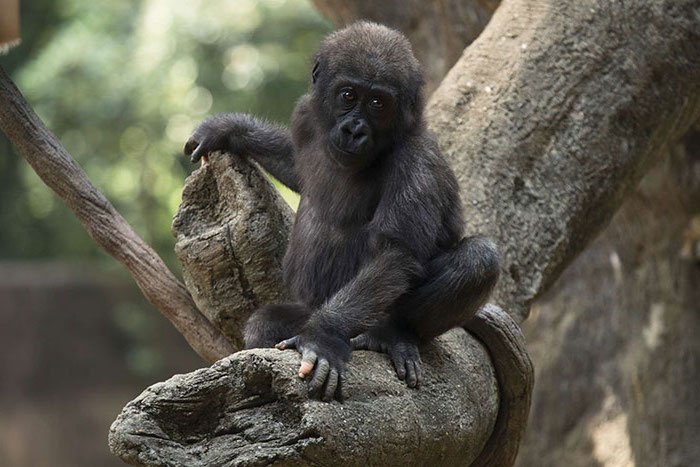
This normally-looking young gorilla has some pretty outstanding fingers that lack pigmentation. As a result, they look startlingly human, which came as a surprise to most people.
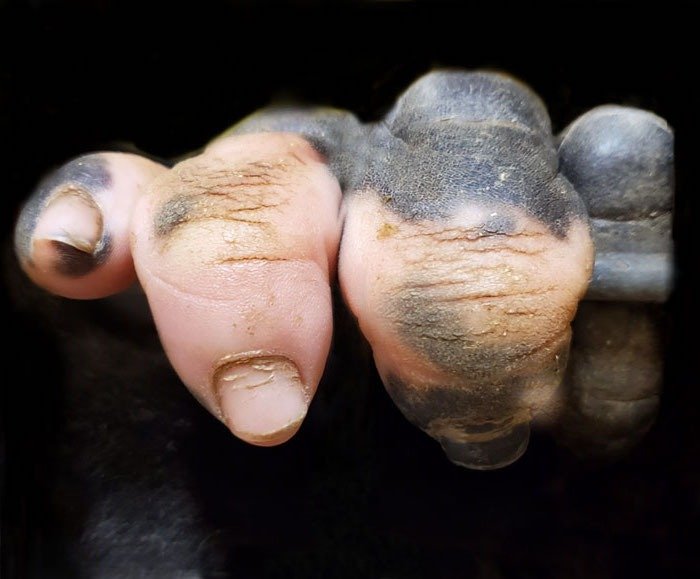
PRIMATES AND GORILLAS OF UGANDA – 8DAYS/7NIGHTS
Trekking Procedures:
A visit to these gentle giants in their natural environment is a unique and wonderful experience – one you’ll never forget. The park rangers monitor the gorillas daily and have a fairly good idea of where they are.
However, they are free-roaming animals, and their sighting cannot be guaranteed. As the gorillas share much of our DNA, anyone with even the slightest cold or transferable illness will not be permitted to trek (yellow fever inoculations are also compulsory). Trekking is also only open to people over 16 years old.
Getting There
To get to the mountain gorillas, first you have to travel to Bwindi Impenetrable Forest (Uganda).
In Uganda, the travel time from Kampala Airport to Bwindi takes approximately 9 to 10 hours by car and often requires an overnight stay at Lake Mburo National Park en route (charter flights are available and will take about 1.5 hours).
In most cases, a visit to Uganda exclusively for the gorillas will require an extra 1 to 2 days on the itinerary, depending on flight arrival/departure times. This isn’t necessarily a negative as it gives travelers the opportunity to spend a few extra days exploring Uganda’s wilderness and wildlife.
Trekking
After arriving at the parks comes time for trekking!
On the day of the trek, guides will sort travelers into small groups (usually averaging between 6-8 people) and each group will be assigned a gorilla group to visit. Travelers will then need to embark on a hike to reach their group of gorillas.

Hikes can range from 30 minutes to a full day depending on the groups’ fitness level and where the gorillas are on that particular day. After arriving at the gorilla group’s location, travelers are allowed to spend exactly one hour with the animals. While the gorillas are habituated to be around humans, it is only for small amounts of time.
What to take on the trek:
You will need to wear comfortable hiking/walking shoes as you spend a lot of time walking. Wear long pants, a long sleeve top and take a rain jacket with as you are in the dense jungle so you can get a bit wet.

You will be doing a bit of “bushwhacking” so bring along a pair of gloves to protect your hands. There are stinging nettles, which can irritate your hands more than damage them! You will take a small daypack with you when trekking containing a packed lunch, which you will stop en route for (this is prepared in the morning before leaving the campsite).
Also concerning cameras – no flash photography is allowed, so bring along a 400 or 800-speed film to be able to get the best photos without a flash. When you find the Gorilla family you will leave your daypacks in a spot and then take only your camera with you. The minimum age for trekking is 16 years, however, the trek is recommended for 18 and over.
How much does a gorilla weigh?
Gorillas are the world’s largest primates, with males weighing around 200kg and standing about 1.4-1.8m tall in the wild. Females tend to be 20-30cm shorter and weigh roughly half what the males do.

A male gorilla’s armspan is enormous, stretching 2.3-2.6m, while female gorilla’s armspans are proportionally smaller.
It’s hard to measure how strong a gorilla really is, but estimates range from around 4x – 10x stronger than your average human. A silverback gorilla’s strength is certainly formidable. All gorillas can tear down banana trees without trying too hard, they’ve escaped from cages by bending the iron bars, and they have a bite force of around 1300 psi, double that of a lion.
Aggressive gorilla baring its teeth
But apart from in conflicts between silverbacks, gorillas tend to be gentle giants that rarely display their full strength. They’re also built quite differently to humans, which makes them more efficient climbers and better adapted to walking on all fours.

That means that measuring their strength by human standards doesn’t make a huge amount of sense, as they wouldn’t be able to perform some of the movements we take for granted because they balance completely differently.
How clever are gorillas?
Gorillas are highly intelligent. They don’t use tools as much as chimpanzees do, but wild gorillas have been seen using sticks to gauge water depth, bamboo as ladders to help infants climb, and recently gorillas have been seen for the first time using sticks to eat ants without being stung.

Another sign of intelligence is the gorilla’s impressive communication abilities, and they’ve been recorded making some 25 different sounds.
PRIMATES AND GORILLAS OF UGANDA – 6 DAYS / 5 NIGHTS
What do gorillas eat?
Gorillas are mainly herbivores, and their diet mostly consists of bamboo, fruit and leafy plants, though western lowland gorillas also eat small insects. Adult gorillas can eat up to 30kg of food each day.
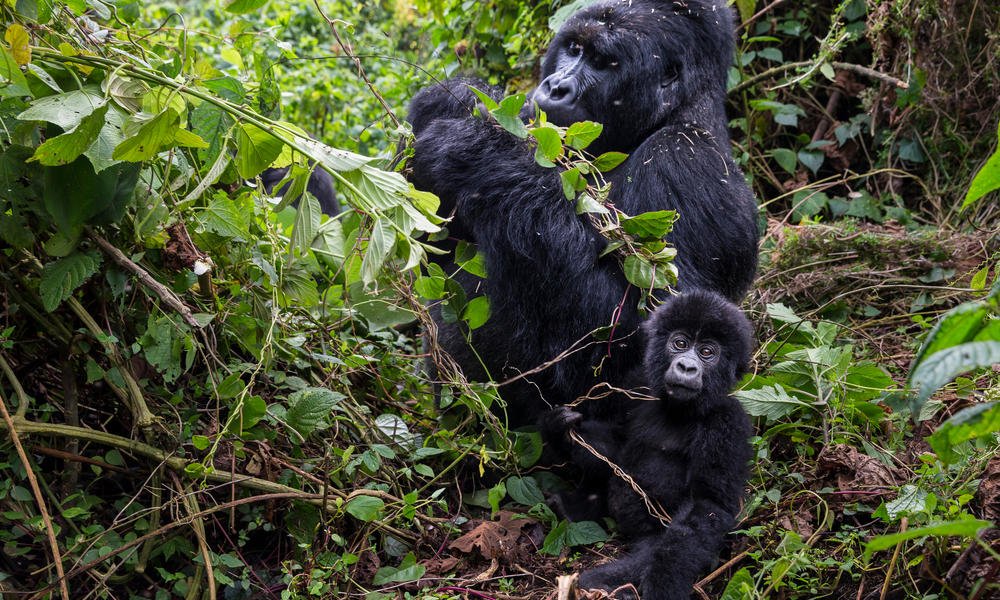
As roaming herbivores, gorillas play a vital role in seed dispersal. Many large fruit trees depend upon these animals to survive.
Research published in early 2016 showed that gorillas hum when contentedly when eating their favourite food.
“Gorillas seem to hum and sing when encountering food they really like,” explained Simone Pika of the Max Planck Institute for Ornithology, who led the study.
“This is very similar to our own behaviour when eating delicious food and emphasising this by also making ‘mmmmm’ sounds.”
How long does a gorilla live?
In the wild, a gorilla’s lifespan is around 35-40 years, but they often live longer in captivity, sometimes for over 50 years. The oldest gorilla ever recorded was a female western gorilla at the Columbus Zoo that reached the ripe old age of 60 before dying in 2017.
Gorillas are classed as infants until they reach around three-and-a-half years old, and adults from around 8 years. Males between 8-12 years are called ‘blackbacks’. Then from 12 years old, they develop a silver section of hair over their back and hips, earning them the name ‘silverback’.
Where do gorillas sleep?
Gorillas build nests in which to sleep, both on the ground and in trees, made of leaves and branches. Counting abandoned nests is an effective way for scientists to estimate population size.
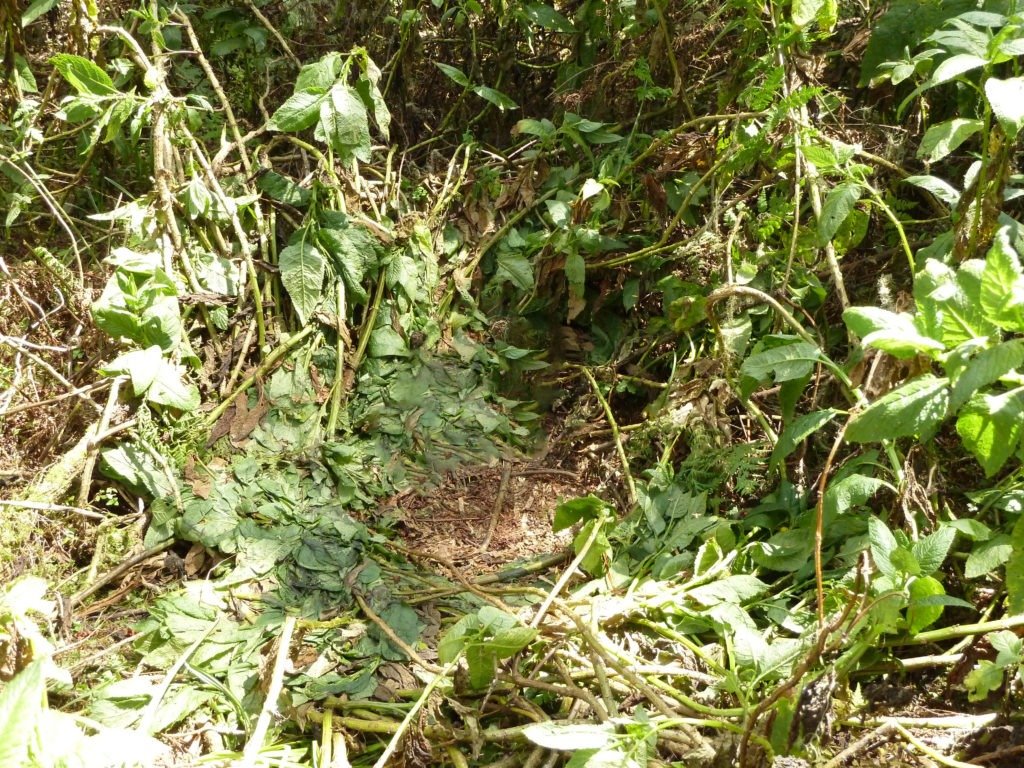
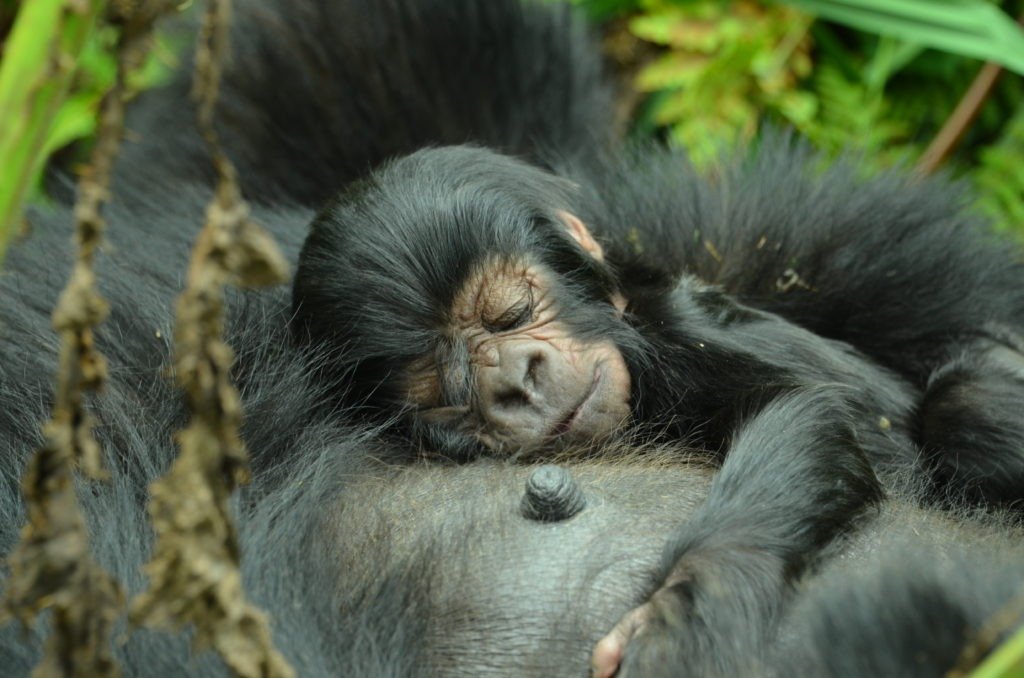
All great ape species, including humans, like to rest in a comfortable place at night. Just how humans like to curl up in a bed with blankets, gorillas, orangutans, chimpanzees and bonobos all find materials in their environment to use as bedding! In fact, humans are the only great ape that doesn’t build a new nest every night. While mountain gorillas nest almost exclusively on the ground, the other types of gorillas as well as other great apes generally make their nests high in the treetops and off the ground from potential predators.
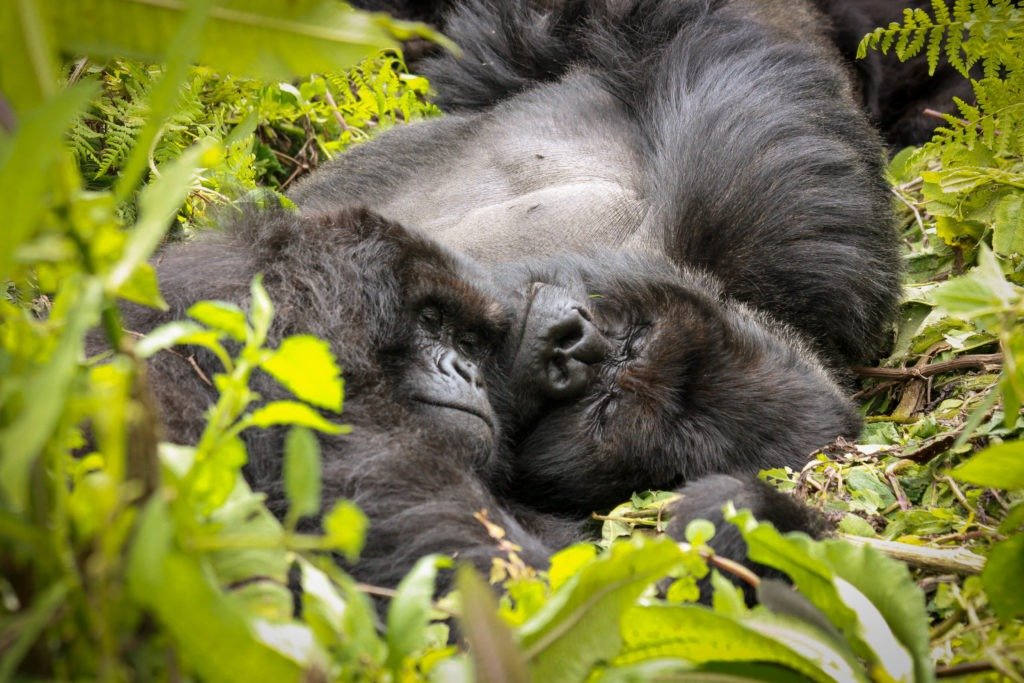
Gorillas usually start making their nests about an hour before the sun sets, in time to be in bed by dark! They typically stay in their nest the entire night, just like people. However, gorillas sleep longer than humans, averaging about 12 hours of rest each night.
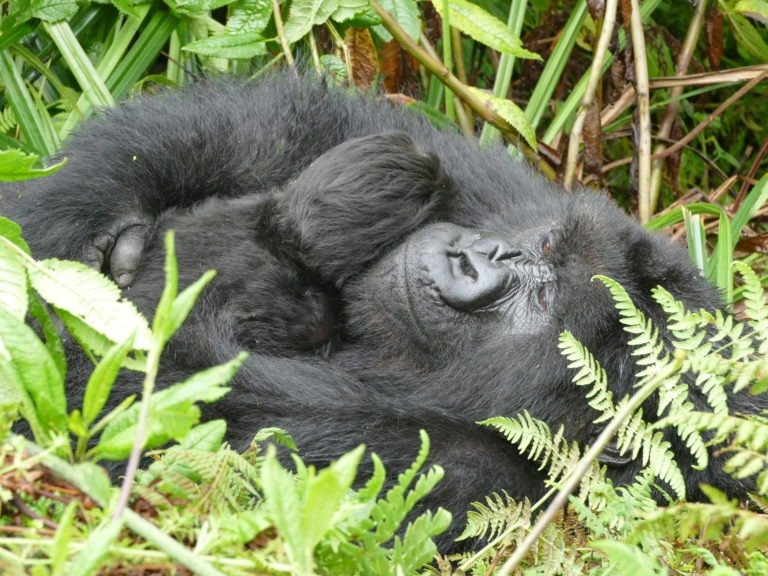
How can you tell individual gorillas apart?
Just like us, humans have unique fingerprints, but that’s not much use for identification in the field.
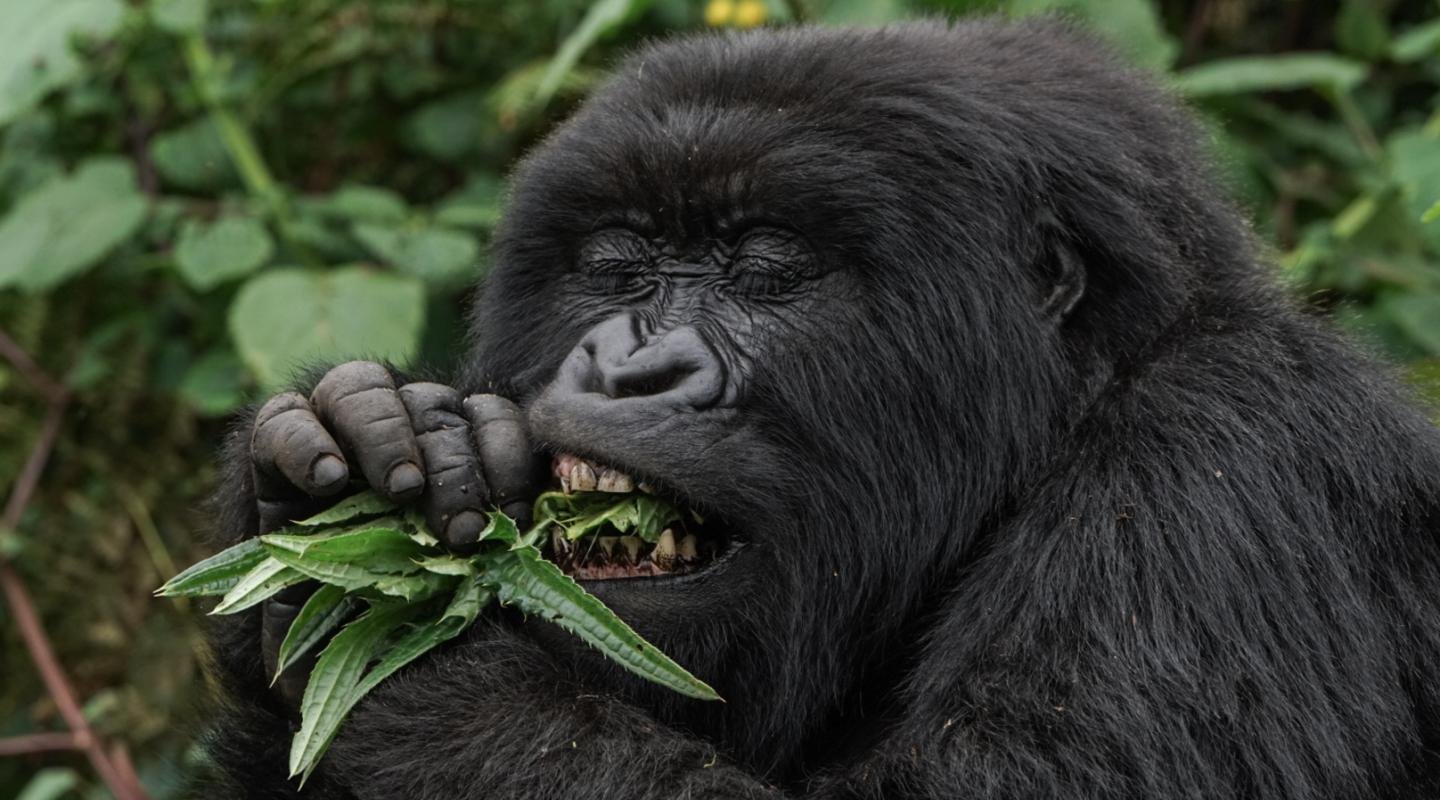
More helpfully, gorillas also have unique noseprints, which can be used to identify individuals from photographs by looking at the nostrils and the bridge of the nose.
How can gorillas knuckle-walk?
Gorillas (plus chimps and bonobos) are specialised knuckle-walkers. This is not because they can’t carry their weight upright – they can walk bipedally when necessary. As knuckle-walkers, gorillas have various adaptations for stability and weight-bearing.

The middle and end phalanges (finger bones), which bear the animal’s weight, are widened and flattened for extra strength; in the forearm, the end of the radius that sits nearest the hand is both cupped and downward-facing, allowing it to fit snugly beside the scaphoid in the wrist; the metacarpals (knuckle bones) have ridges that ‘lock’ into place with the phalanges; and the skin on the fingers is thick as well as heavily padded.
How many babies do gorillas have?
Females usually produce just one baby every four to six years. In total, a female will only give birth three or four times. Such a low reproduction rate makes it difficult for populations to bounce back following a decline.
